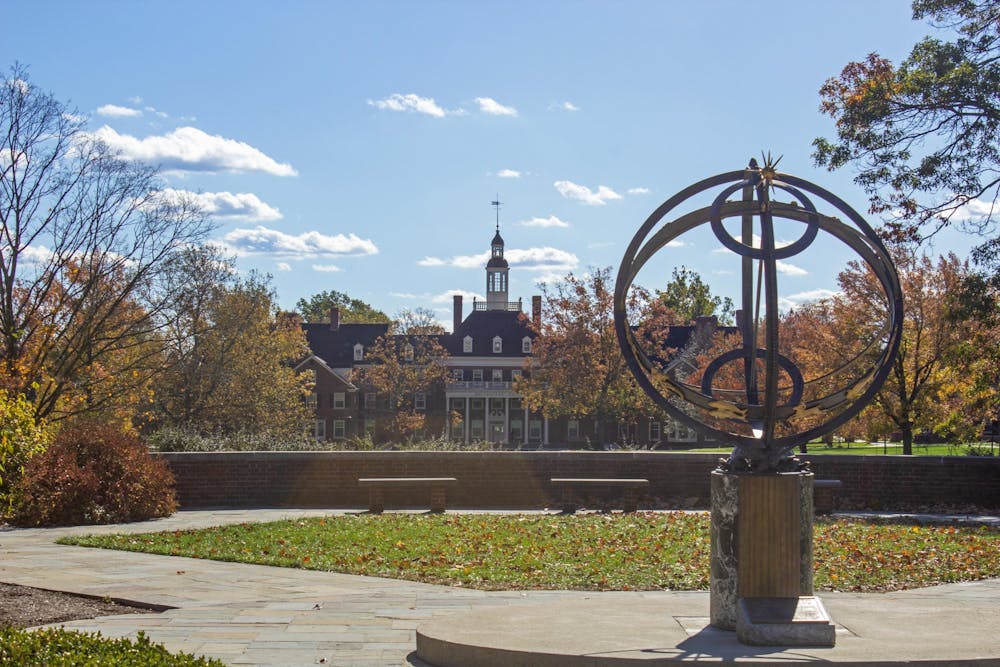At Miami University, students see “public ivy” plastered around the campus — on water bottles, in the Shriver Center and even on posters in the bathroom.
High school students see the term in the red and white Miami brochures that flood their mailboxes during recruiting season.
“Public ivy” might be oddly enticing — but what does it mean? Does the meaning change once students are enrolled?
“You either hear about a public university or a private university,” said junior tour guide Hailey Kingsbury. “They’re at two opposite ends of the spectrum, and [public ivy is] kind of like a middle ground between the two.”
The term came from a 1985 book by Richard Moll titled “The Public Ivies: A Guide to America’s Best Public Undergraduate Colleges and Universities.”
In the book, Moll highlighted eight institutions across the United States that he felt embodied an Ivy League school academically and socially at a public school price.
In his research, Moll considered “exceptional quality,” “very selective admissions,” “a narrowed mission to develop the ‘whole person,’” “resources to match ideals with materials and manpower” plus “prestige.”
Based on that criteria and a week-long visit analyzing aspects such as professor interactions and campus culture, Miami was one of the eight universities selected, along with the College of William & Mary, the University of California (Berkeley), the University of Michigan, the University of North Carolina, the University of Texas, the University of Vermont and the University of Virginia.
“Miami kind of owns the ‘public ivy’ term,” said Michele Sparks, vice president and chief marketing and communications officer. “We’ve leaned into it so hard, so it would be odd for another school [from the Moll ranking] to try and own it.”
Sparks said Miami began pushing the public ivy brand in the mid-2000s.
“It’s really the lead in all our marketing materials,” she said. “I always like to say that it’s the front page of everything we’re doing.”
According to U.S. News National University Rankings, of the eight original public ivies, Miami ranks seventh, and UC Berkeley ranks first. Miami also ranks 91st for all public universities in the country.
Enjoy what you're reading?
Signup for our newsletter
“Some would say [public ivy] is an old ranking, and it’s putting us in the past,” Sparks said, “but I don’t think it does that. I think it showcases us as a contemporary institution in our marketing materials.”
Miami students are now used to seeing public ivy as the center of the university’s marketing.
“It seems weird at first, but there are no negative connotations to it,” Kingsbury said. “If anything, it makes us stand out.”
First-year Mackenzie Lee agreed. “I don’t see how it could be a bad thing,” she said. “If it’s a private school education for a cheaper cost, it’s giving more students access to education.”
As a tour guide, Kingsbury said she doesn’t mention Miami being a public ivy in her spiel.
“It comes out more when you talk about what Miami provides. It’s encapsulated in everything else that I talk about,” she said, referring to the networking, research and other opportunities she has taken advantage of on campus.
“There’s merit to [using public ivy] that can be backed up with research,” Sparks said.
First-years Inderjot Hothi and Julia Gurevitz said they appreciate what the term means, but the marketing could be more clear.
“It’s nice that it’s a public ivy, but people think that it’s a weird thing to flex on,” Hothi said. “But without it, Miami’s still Miami.”
Hothi said that Miami could hone in on what exactly makes it a public ivy and why it’s a meaningful term.
“I think what Miami needs to advertise is the connection professors have with their students,” he said.
Gurevitz agreed.
“I think that’s way more important,” she said. “If anything’s going to attract me to a school, it’s definitely that … That’s worth way more to me than public ivy.”




